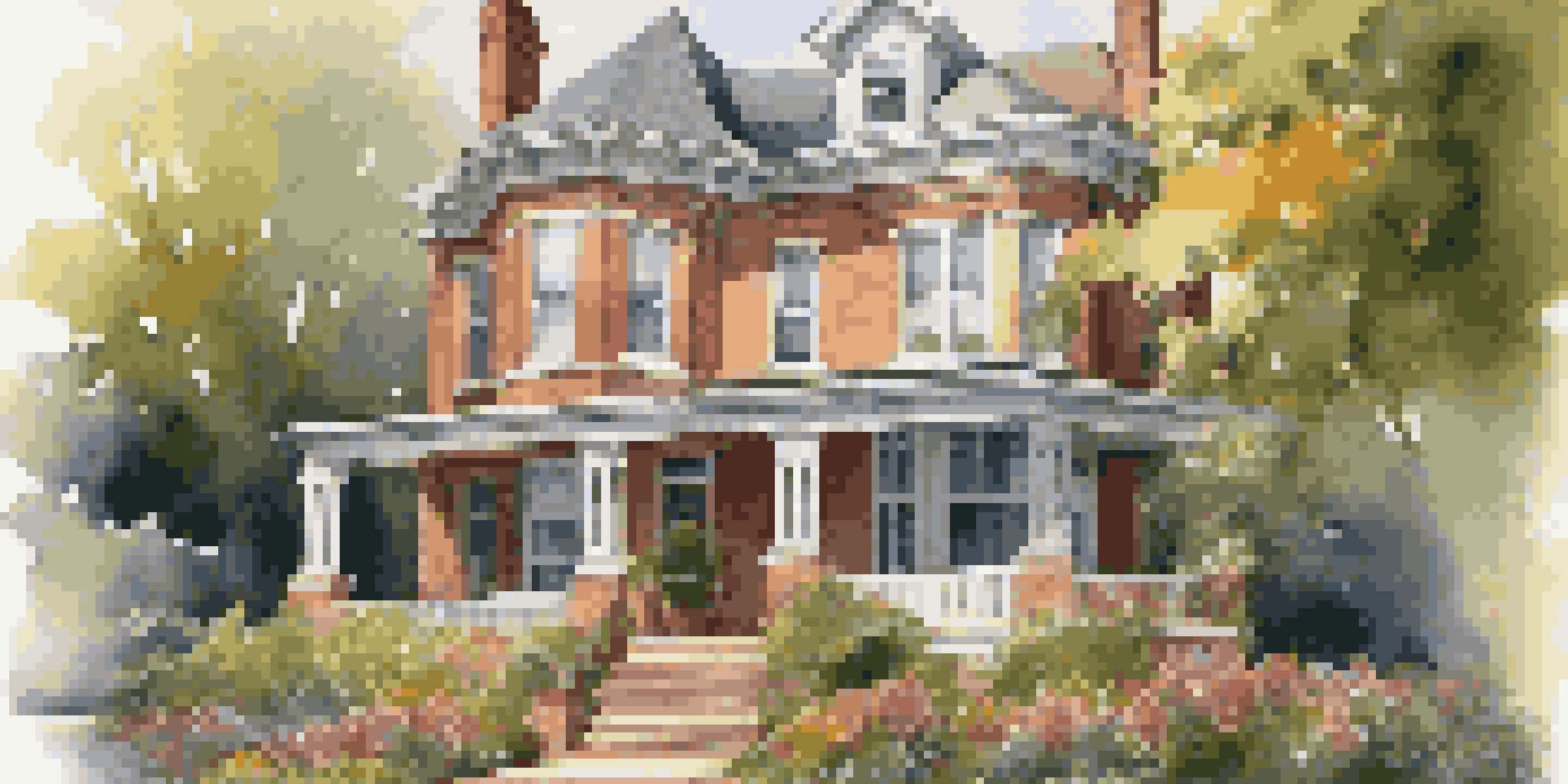Renovation Tips for Older Homes: What to Consider

Understanding the Unique Challenges of Older Homes
Renovating an older home can be both exciting and daunting. These homes often come with their own set of quirks, from outdated plumbing to unforeseen structural issues. It's essential to recognize that while older homes may have character, they can also present unique challenges that newer builds typically don't face.
Old houses are like old friends. They have their quirks, their flaws, and their unique stories to tell.
Before diving into renovations, take the time to assess your home thoroughly. Look for signs of decay, such as water damage, mold, or foundation issues. Understanding these problems early on can help you plan your renovation effectively, saving you time and money in the long run.
Additionally, consider consulting with a professional inspector who specializes in older homes. They can provide insights and identify any hidden issues that you might overlook, ensuring your renovation journey starts on the right foot.
Preserving Historical Features While Renovating
One of the most beautiful aspects of older homes is their historical charm, which can be a significant selling point. When planning your renovation, think about how you can preserve these unique features. Elements like original moldings, hardwood floors, and vintage fixtures can add character and value to your home.

Instead of replacing these features, consider restoring them. For example, refinishing hardwood floors can bring them back to life without losing their authenticity. You might also explore reproduction hardware that mirrors the original style, maintaining the home's charm while ensuring functionality.
Assessing Unique Challenges Early
Thoroughly inspecting an older home before renovations helps identify potential issues, ensuring a smoother renovation process.
By keeping historical elements intact, you not only honor the craftsmanship of the past but also create a warm, inviting atmosphere that resonates with both you and potential buyers.
Planning for Modern Amenities in Older Homes
While preserving historical features is vital, integrating modern amenities can greatly enhance your comfort and convenience. Think about how to incorporate technology into your renovation plans without compromising the home's original character. This might include upgrading electrical systems, adding energy-efficient windows, or installing smart home devices.
The best way to preserve the past is to live in it.
Consider the layout as well; older homes often have smaller rooms or less open spaces. You might think about removing non-structural walls to create a more open floor plan that suits today's lifestyle, making your home more functional.
Balancing the old with the new ensures that you enjoy the best of both worlds—preserving the charm of your home while enhancing its livability and efficiency.
Budgeting for Unexpected Renovation Costs
When renovating an older home, it's crucial to set a realistic budget that accounts for unexpected costs. Older structures can hide problems that only become visible once renovations begin, such as faulty wiring or plumbing issues. By planning for these surprises, you'll avoid financial stress down the road.
A good rule of thumb is to add an extra 10-20% to your budget for contingencies. This extra cushion can help you navigate any unforeseen expenses without derailing your project.
Balancing History with Modern Needs
Preserving historical features while integrating modern amenities enhances both the charm and functionality of older homes.
Moreover, consider seeking multiple quotes from contractors to get a clear idea of potential costs. This will help you make informed decisions and ensure that your renovation stays within budget.
Choosing the Right Materials for Longevity
When it comes to renovating older homes, the choice of materials can make a significant difference in both aesthetics and durability. Opt for high-quality, durable materials that not only enhance the home's beauty but also stand the test of time. For example, using natural stone or brick can add timeless appeal while ensuring longevity.
It's also wise to consider the climate in which your home is located. Certain materials perform better in specific environments, so make choices that align with local weather conditions. This attention to detail can help maintain your home's integrity over the years.
Finally, prioritize sustainability by looking for eco-friendly materials that reduce your environmental impact. Many modern options mimic the look of traditional materials while offering better durability, making them a smart choice for your renovation.
Navigating Local Regulations and Permits
Before starting any renovation project, it's essential to familiarize yourself with local regulations and permitting requirements. Older homes, especially those in historic districts, may have specific guidelines to preserve their character. Failing to adhere to these can lead to costly fines or even forced restoration to original conditions.
Start by checking with your local government or planning department to understand what permits you may need. This proactive approach can save you time and headaches later in the renovation process.
Budget for Surprises in Renovations
Setting a realistic budget with a contingency for unexpected costs is crucial when renovating older homes.
Additionally, if your home is designated as a historic property, you may need to go through an approval process for any significant changes. Collaborating with local preservation societies can help you navigate these complexities, ensuring your renovation aligns with community standards.
Finding the Right Professionals for Your Renovation
Renovating an older home often requires a team of skilled professionals who understand the unique challenges involved. Start by seeking out contractors who specialize in older homes, as they will have the experience necessary to handle intricate details and potential complications.
Don't hesitate to ask for references and review past projects. A contractor's previous work can give you insight into their style and expertise, helping you find someone who aligns with your vision.

Additionally, consider hiring an architect or designer who has experience with historical renovations. They can help you create a cohesive plan that respects the home's character while enhancing its functionality.